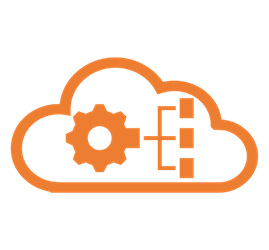
Changing commercial operations as we know it
Although open retail APIs have made a big splash in current markets, the open concept as a standard has been around as early as 2015 1. So, where are the Commercial APIs?
The concept of open commercial APIs is virtually unheard of and is still in its infancy. Open commercial APIs are a big deal as they provide for a new way to service commercial customers. Open APIs have rooted beginnings in corporations wanting to move faster, be more efficient, and smarter about their product offering to a consumer market. Currently, this new open standard has paved the way for Fintech’s to directly access consumer shopping, banking, and communication information.
We have seen many new successful Fintech start-ups use APIs to sell product directly to consumers. Companies like Acorns, Current, Chime, Simple, and Qapital have been big hits in the mobile application market.
Most fintech’s and corporations have not focused on how Open APIs can benefit their corporate partners and this is seen in the fact that there are very few Open API Corporate or Commercial marketplaces.
Fintech’s venture into commercial Open APIs
To do this, FIs and other Tech savvy groups required an open or public standard which would allow standardized access to commercial institutions data. This open/public API standard can be used by corporations, other third parties, and other Financial Institutions as a foundation for creating new applications that can do pretty much anything in a digital world. This type of API standard has opened the digital world to endless access possibilities.
Lack of corporate or commercial APIs, why is that?
As stated, there is still a large unexplored corporate and commercial API market. Reasons for this include the fact that creation of open commercial APIs are not widely sought after and are mainly undefined, expensive, and don’t provide for a clear and easy ROI. This combination makes for a slow move by Corporate America toward an Open API standard. Another reason that Corporations have not embraced Open APIs is that they don’t have a clear understanding of what to build, a strategy that outlines the customer need for Open APIs, and why they need to be part of the Open API ecosystem.
For these same reasons, institutions that haven’t consider an Open API approach will ultimately fall behind the organizations that have put such strategies in place.
Consider this, back in the day people laughed at, made fun, and balked at the use of an automobile to replace the horse. Ultimately however, the automobile slowly replaced the horse as the main mode of transportation. There are many reasons why this happened, cars are much faster, cars provide climate control, cars are comfortable to sit in, but maintenance costs are certainly one of the largest advantages. The owner no longer needed to feed, clean up after, and care for their main mode of transportation on a daily basis. Even though there are maintenance costs associated with an automobile, they don’t come close to the maintenance fees required to maintain a horse.
As new commercial Open APIs become available, organizations will clamor to them and demand new and more efficient API tools that aid in huge costs savings to their organizations. At that point, corporate institutions will have the information they need to build a correct strategy, business case, and ROI to create or be part of an Open API ecosystem.
Why should corporations use commercial Open APIs
According to market experts, estimates of an Open API ecosystem are in the trillions of dollars2 and some of the major consultants are estimating the growth of Open APIs will triple in the next 12 months3. Open APIs will enjoy exponential growth over the next 10 years and pave the way to new digital technologies.
Use of Open or Public APIs enhances the digital application of exchanging data between systems. Having this ability allows for building APIs that can virtually think on their own to make predictions on business cash flow and forecasting much easier for those companies that use them. Those that embrace APIs will enjoy increases in profits, sales, and higher gains in market share. The open and modular architecture of Open APIs allow for business and IT improvement.
Open APIs will aid in deploying new products, reducing costs, and simplifying operations. They can aid in Financial planning and forecasting by providing valuable information on spending patterns that aid in identifying and planning for new opportunities. Deep dive analysis APIs will provide for a better understanding of their customers and their customer’s needs.
Efficiency and Cost savings are definitely two concrete reasons to use open APIs. There is a large cost savings in enabling ad hoc access to specific information without the cumbersome need to access multiple systems, multiple credentials, and multiple cut & paste steps. This includes a savings in data imports that decrease the time needed to get the job done. Open APIs allow those individuals that pull information, such as corporate system engineers and analysts, to talk directly to corporate applications. This ensures greater efficiency, reduced costs, and reduced errors.
Summary
Open APIs and business models that support APIs are still in their infancy. Such models are still working to gain footholds in today’s digital markets, but there is no doubt that commercial APIs can and will increase commercial revenue as well as provide increased savings and efficiencies. Each commercial organization will need to come up with their own individual strategy and plan for being part of an open API digital ecosystem.
1 – OpenAPI Initiative, November 15, 2015. “New Collaborative Project to Extend Swagger Specification for Building Connected Applications and Services”
https://www.openapis.org/announcement/2015/11/05/new-collaborative-project-to-extend-swagger-specification-for-building-connected-applications-and-services
2 – McKinsey Digital, October 1, 2013. “Open data: Unlocking innovation and performance with liquid information”
https://www.mckinsey.com/business-functions/mckinsey-digital/our-insights/open-data-unlocking-innovation-and-performance-with-liquid-information
3 – McKinsey Digital, September 17, 2017. “What it really takes to capture the value of APIs”
https://www.mckinsey.com/business-functions/mckinsey-digital/our-insights/what-it-really-takes-to-capture-the-value-of-apis
